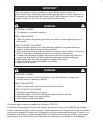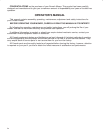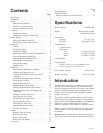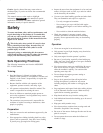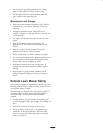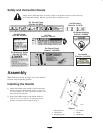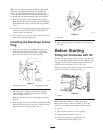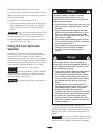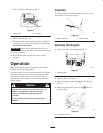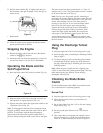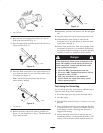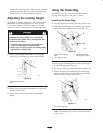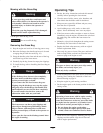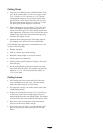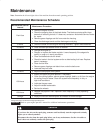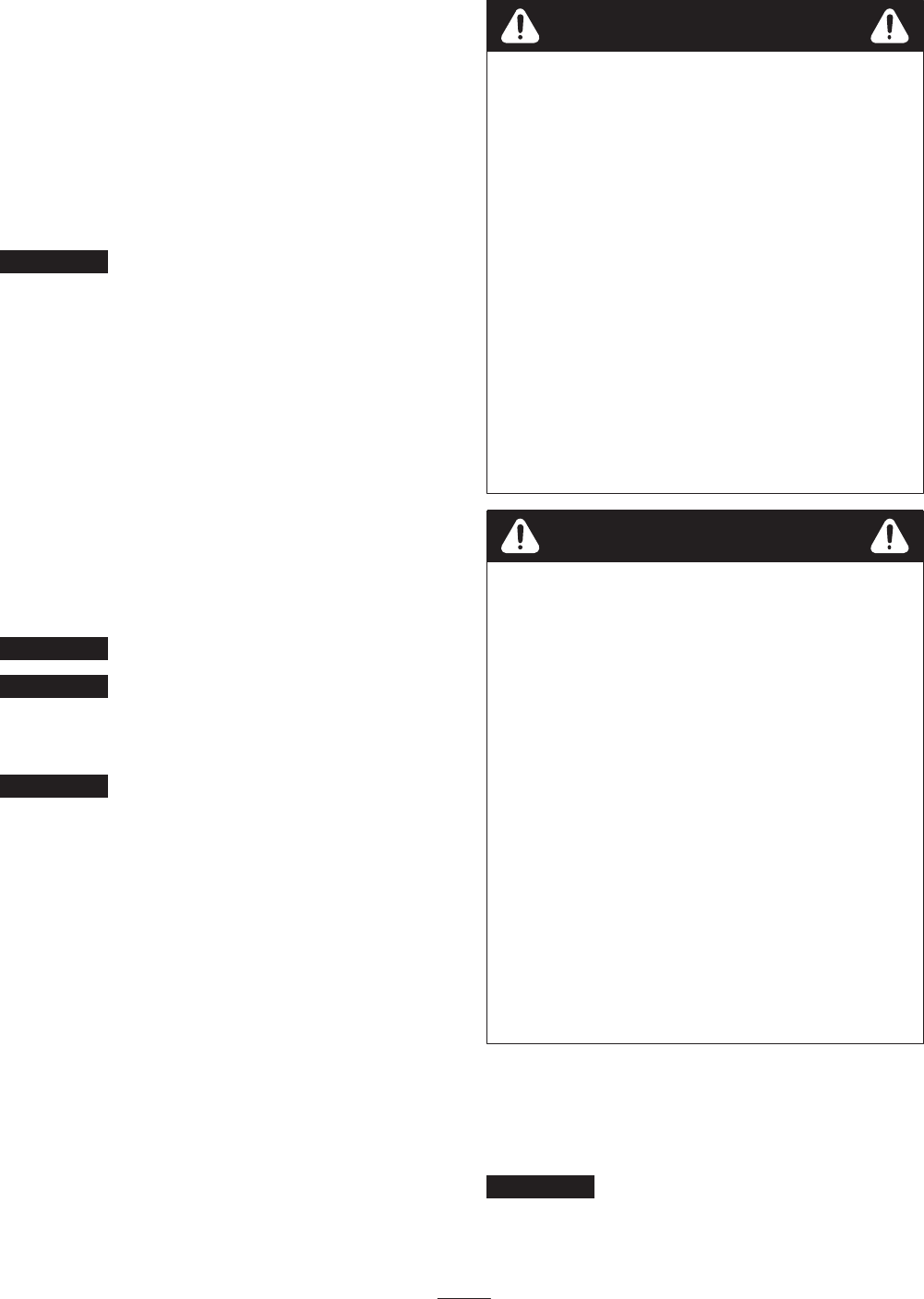
6
4. Wipe the dipstick clean with a clean cloth.
5. Insert the dipstick into the filler neck, then remove it.
Note: To ensure an accurate oil level reading, you must
fully install the dipstick.
6. Read the oil level on the dipstick (Fig. 4).
7. If the oil level reading is below the Add mark on the
dipstick, slowly pour only enough oil into the filler
hole to raise the oil level to the Full mark on the
dipstick.
Important Do not overfill the crankcase with oil and
run the engine; engine damage will result. Drain the
excess oil until the oil level on the dipstick reads Full.
8. Insert the dipstick into the filler neck and rotate the
cap clockwise until it is tight.
Filling the Fuel Tank with
Gasoline
For best results, use clean, fresh, lead-free gasoline,
including oxygenated or reformulated gasoline, with an
octane rating of 87 or higher. To ensure freshness,
purchase only the quantity of gasoline that you expect to
use in 30 days. Using unleaded gasoline results in fewer
combustion deposits and longer engine life. You may use
leaded gasoline if unleaded gasoline is not available.
Important Do not add oil to the gasoline.
Important Do not use methanol, gasoline containing
methanol, gasohol containing more than 10% ethanol,
premium gasoline, or white gas. Using these fuels can
damage the engine’s fuel system.
Important Do not use gasoline that is more than 30
days old.
Danger
In certain conditions, gasoline is extremely
flammable and highly explosive. A fire or
explosion from gasoline can burn you and others
and can damage property.
• Fill the fuel tank outdoors, in an open area, and
when the engine is cold. Wipe up any gasoline
that spills.
• Do not fill the fuel tank completely full. Add
gasoline to the fuel tank until the level is 1/4 to
1/2 in. (6 to 13 mm) below the bottom of the
filler neck. This empty space in the tank allows
the gasoline to expand.
• Never smoke when handling gasoline, and stay
away from an open flame or where a spark may
ignite the gasoline fumes.
• Store gasoline in an approved fuel container
and keep it out of the reach of children.
• Never buy more than a 30-day supply of
gasoline.
Danger
When fueling, under certain circumstances, a
static charge can develop, igniting the gasoline. A
fire or explosion from gasoline can burn you and
others and damage property.
• Always place gasoline containers on the ground
and away from your vehicle before filling.
• Do not fill gasoline containers inside a vehicle
or on a truck or trailer bed because interior
carpets or plastic truck bed liners may insulate
the container and slow the loss of any static
charge.
• When practical, remove gasoline-powered
equipment from the truck or trailer and refuel
the equipment with its wheels on the round.
• If this is not possible, then refuel such
equipment on a truck or trailer from a portable
container, not from a gasoline dispenser nozzle.
• If you must use a gasoline dispenser nozzle,
keep the nozzle in contact with the rim of the
fuel tank or container opening at all times until
fueling is complete.
Use a fuel stabilizer/conditioner regularly during
operation and storage. A stabilizer/conditioner cleans the
engine during operation and prevents gum-like varnish
deposits from forming in the engine during periods of
storage.
Important Do not use fuel additives other than a fuel
stabilizer/conditioner. Do not use fuel stabilizers with an
alcohol base such as ethanol, methanol, or isopropanol.



